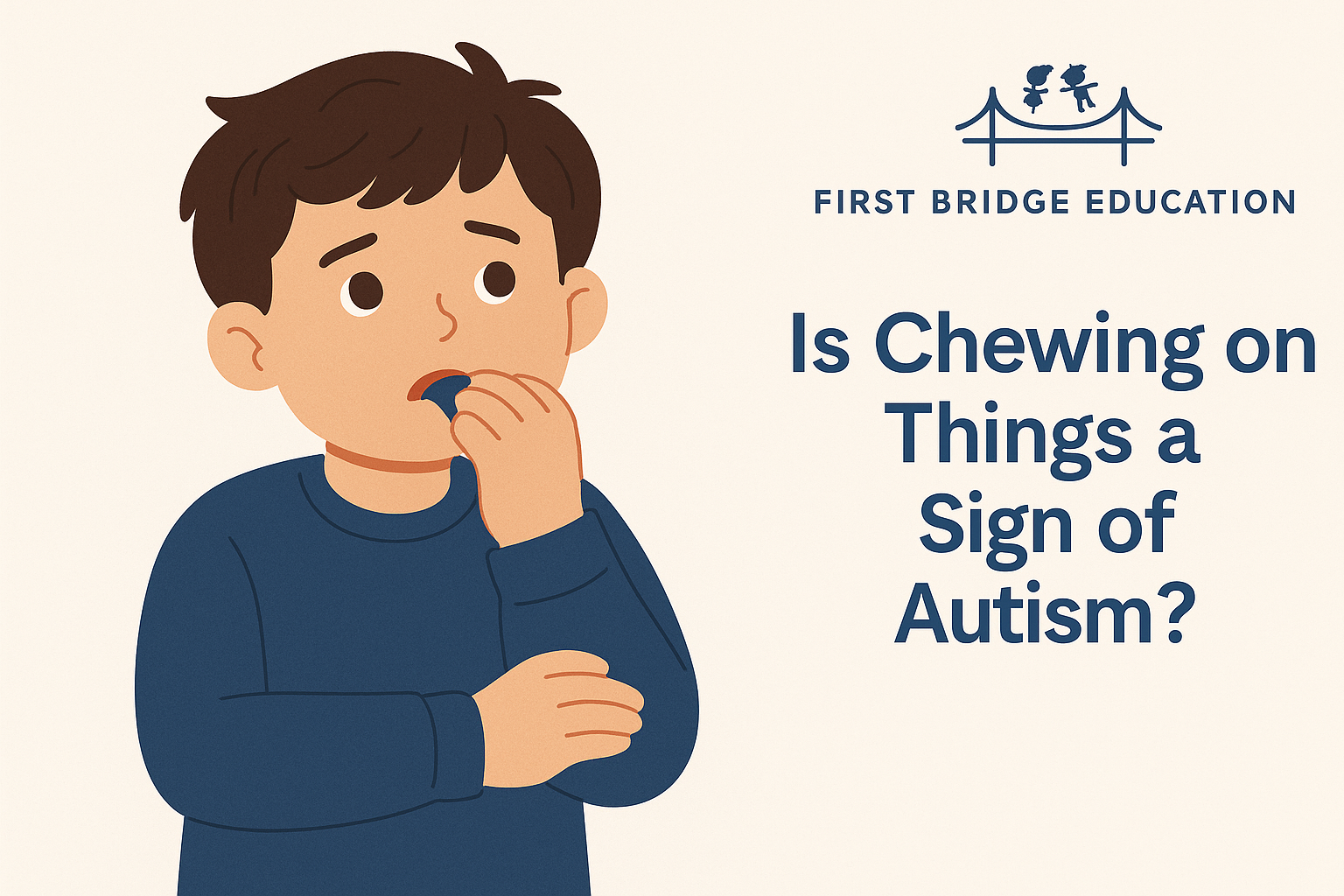
Chewing on Toys, Clothes, or Fingers, What Does It Mean?
If your child frequently chews on objects, like sleeves, toys, pens, or even their fingers, you might be wondering if this is just a phase or if it could be something more.
At First Bridge Education, parents often ask us: “Is chewing on things a sign of autism?”
The short answer is sometimes, but not always. Let’s explore what it could mean, when to seek support, and how we help children manage sensory behaviours like chewing.
Why Do Some Children Chew on Things?
Chewing is often a sensory-seeking behaviour. For many children, autistic or not, chewing provides:
- Comfort and self-regulation
- A way to reduce anxiety or overwhelm
- Tactile stimulation for oral motor development
In some cases, it may also signal:
- Underdeveloped oral motor skills
- Trouble with sensory integration
- A need for deep-pressure input to stay calm and focused
Is Chewing Always Linked to Autism?
No, not always. Many young children go through phases of mouthing or chewing during teething or times of stress. However, in autistic children, chewing can be part of a broader pattern of sensory processing differences and can also accompany:
- Hand flapping or body rocking
- Hypersensitivity to sound or light
- Avoidance of certain textures or foods
- Delayed speech or social communication
If your child exhibits multiple sensory or social differences alongside chewing, it could be worth exploring further with a developmental specialist. Contact First Bridge Education to discuss your concerns with us.
When Should I Be Concerned?
Occasional chewing is usually nothing to worry about. But if chewing is frequent, intense, or interfering with daily life, it might be time to seek guidance.
Look out for:
- Chewing that causes injury (e.g., biting lips, cheeks, or hands)
- Damaged clothing, toys, or school supplies from excessive chewing
- Difficulty calming down without chewing
- Other delays in speech, play, or social interaction
How ABA Therapy at First Bridge Education Can Help
At First Bridge Education, we take a gentle, individualised approach to understanding and supporting sensory behaviours such as chewing. We explore why your child is chewing, what need it is meeting, and how to respond appropriately.
Functional Replacements
We teach safe and socially appropriate alternatives, such as fidget tools or calming routines.
Emotional Regulation Skills
We work on building your child’s ability to self-regulate with or without chewing, helping reduce stress and increase independence.
Parent Training
Parent training is available as part of enrolment at First Bridge Education. You’ll learn practical, evidence-based strategies to support your child at home, school, or in public settings.
Key Takeaways
- Chewing on objects can be a sign of autism, but it isn’t always.
- It’s often a sensory behaviour that helps children feel calm and focused.
- When chewing is intense, persistent, or paired with other signs of autism, it’s worth speaking to a professional.
- Early intervention can support your child’s development and emotional wellbeing.
Concerned About Your Child's Chewing or Sensory Behaviours?
If you’re wondering whether your child’s chewing habits could be linked to autism or another sensory need, we’re here to help.
